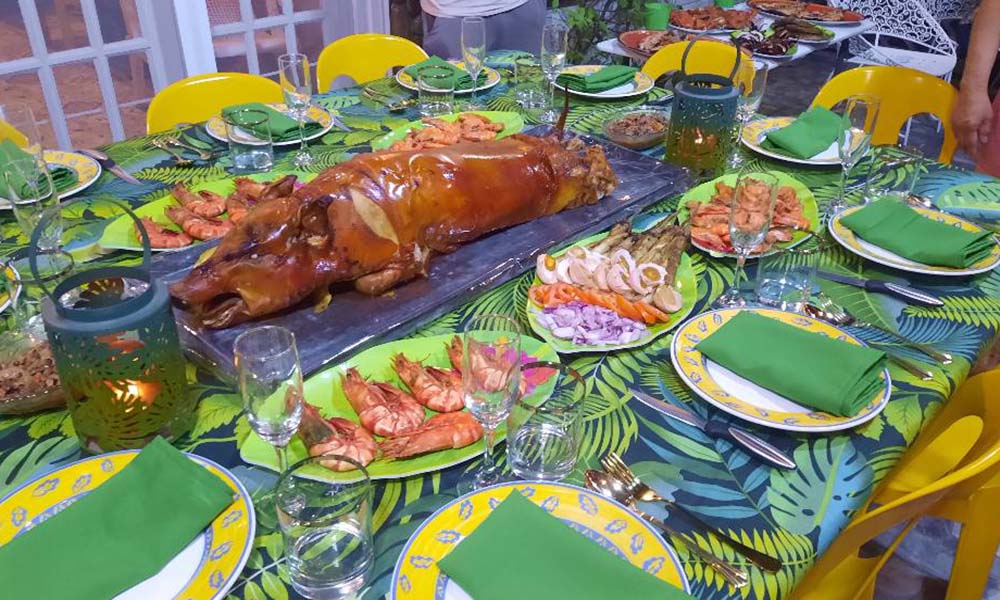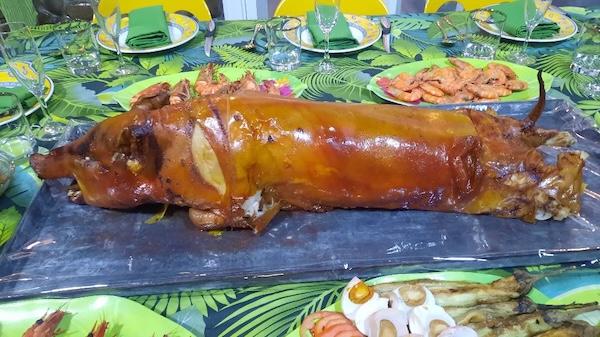
Porcine redemption
 By Rex Catubig
By Rex Catubig
BE it holiday or fiesta season, birthday or anniversary, or whatever important occasion, glorious food takes center stage in the celebrations. The lowly pig is undeniably the king of the festive table.
Ham, which is a throwback to our Chinese, Spanish, and American culinary heritage, may claim an exalted, snobbish position, but still, the native Lechon with its burnished, golden brown crisp skin and flavorful meat is the all-time favorite and boasts of a worshipful fan base.

Yet, despite this exalted and revered status in the local culinary circuit, the live pig is at the tail end of public esteem.
No other animal is more despised, maligned, and vilified. In fact, it is considered the worst and vilest of its kind and spoken of only in derogatory terms. The crunchiest cuss words and meanest slurs, “Hayop ka! Baboy ka!”, derived from the word pig and intended for anyone deemed despicable.
Even in health and nutrition circles, the greatest disdain is reserved for its meat, fat, skin, and viscera. Deemed disease-causing and deadly, every inch of this poor porcine creature is stamped with the seal of depravity and marked with the scarlet letter.
It’s dirty, smelly, sloppy, unhygienic, and totally unworthy.
Then, miraculously, the grace of rediscovery and renewed understanding began to unravel and show the path to redemption. The first reversal of its sinful nature is the meritorious proclamation by food authorities that pork meat is the new white meat. It is a welcome perception that the carnivores victoriously savored while it allayed the fears of the hypochondriacs.

But the latest and greatest epiphany is the pronouncement by scientists that pork fat is one of the 100 most nutritious foods (connoisseurs of Binocayon baboy, take note)–proudly sharing the distinguished company of nutritional luminaries such as almonds, cherimoya, kale, et al. In fact, it is ranked number 8 in the nutrition hierarchy with a nutritional score of 73 in a scale of 100.
Sadly, as this was taking place and earning hosannas in the food world, the plague of swine fever disease has been straying unmercifully. All of a sudden, pigs and hogs alike were dying. And the menace was spreading everywhere. Despite the assurance of animal disease experts that the meat of African Swine fever-afflicted pigs does not pose any health hazard among humans and that the swine flu virus or H1N1 is not transmitted by food, pigs have been stigmatized like lepers, and pork has been shunned by buyers. It was totally unappetizing to consume it.
As a result, while there were disease-free hogs, the prevailing scenario drove the pork prices up. And this everyday household protein staple has become progressively prohibitively out of reach of the ordinary workers’ pocket and now worth its weight in gold.

Still, cultural tradition dies hard. The Filipino family will ignore and bypass cravings and eat salt, so to speak, to save for a family milestone. It is an imperative obligation to observe the time-honored tradition of having golden lechon as the centerpiece of the festive celebration.
Lechon defines the wherewithal of a family, the symbol of its proud status and arrogant resolve to show off is achievement and success, as well as a showcase of top-of-the-line hospitality. Ingrained in our DNA, the trait validates and reinforces our resourcefulness and feel-good attitude even in dire straits, and our desire to offer our best: Lechon will find its way as the epitome of our self-worth, our giving nature —and born-to-excel derring do.
Thus, the beloved pig deserves a prominent place of honor, be it so humble, in our Filipino table.










